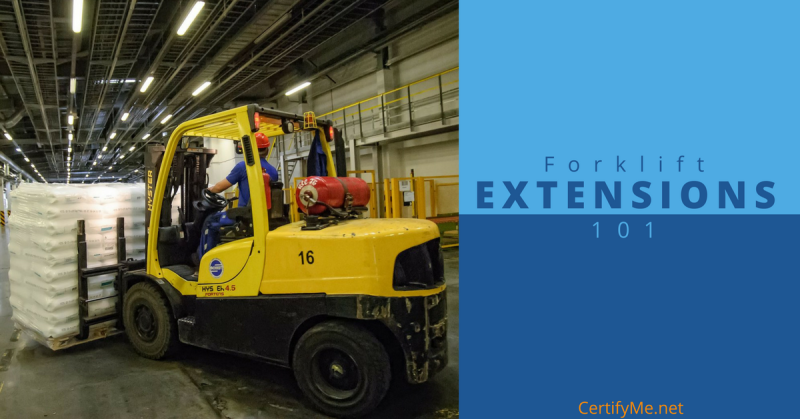Forklift Fork Extensions: Safety, Rules, and Capacity Guidelines
Posted by: admin on April 15, 2025
Forklift accidents linked to attachments like fork extensions have led OSHA to enforce strict rules for their use. Businesses that add extensions without understanding the safety and load impacts risk tip-overs, property damage, and serious injuries. Learning proper forklift extension safety protocols ensures workers handle loads efficiently and maintain compliance.
Why Forklift Extension Safety Matters
Misusing forklift fork extensions compromises the stability of the entire machine. Extensions change the center of gravity and reduce the rated lifting capacity, making tip-overs far more likely. OSHA has documented numerous forklift accidents caused by improper attachment use, prompting regulations focused on safe extension selection, installation, and inspection.
What Are Forklift Fork Extensions?
Forklift fork extensions are heavy-duty attachments that slide over existing forks to extend their reach temporarily. Operators use them for occasional large or awkward loads without investing in a new, longer-forked forklift. Fork extensions differ from boom extensions, which create a telescoping reach for lifting loads vertically or at an angle.
Forklift Extension Safety Guidelines
- Maximum Extension Length: Extensions must not exceed 1.5 times the length of the existing forks.
- Load Center Adjustments: Operators must adjust handling techniques because extensions push the load farther from the forklift’s fulcrum point.
- Weight Capacity Labeling: All extensions must clearly display their individual rated load capacity and specifications.
Forklift Extension Rules You Must Follow
- Written Manufacturer Approval: Companies must obtain written approval from the forklift manufacturer when using any attachments, including extensions.
- Updated Data Plates: Forklifts using extensions must have updated data plates reflecting the attachment’s impact on load capacity.
- OSHA Compliance: OSHA’s 1910.178 standard requires operators to follow specific rules when handling attachments that alter lifting characteristics.
How to Install Forklift Fork Extensions Properly
- Prepare the Forks: Lower forks slightly off the ground for easy extension installation.
- Slide and Secure: Place the extension nose at a 45-degree angle, slide onto the fork, and lock securely using pins or loops.
- Final Inspection: Confirm both extensions are fully seated against the fork heels and locked before lifting any load.
Forklift Extension Capacity Considerations
- Load Impact: Extensions reduce the rated lifting capacity by shifting the load center outward.
- Calculation Formula: Rated load center ÷ Actual load center × Rated lift capacity = New maximum lifting capacity.
- Handling Heavy Loads: For loads approaching capacity limits, using a forklift with longer original forks is safer than relying on extensions.
FAQs About Forklift Fork Extensions
How Often Should Forklift Extensions Be Inspected?
Inspect forklift extensions at least every six months for signs of wear, cracks, or damage to load-bearing welds.
Can Forklift Forks Be Modified or Welded?
Welding modifications should only be performed by expert technicians following manufacturer guidelines and industry standards.
When Is a Longer Forklift Better Than Using Extensions?
Longer forks are preferable for heavy, frequent loads because extensions lower lifting capacity and increase instability risks.
Safer Forklift Operations Start with CertifyMe
CertifyMe offers comprehensive OSHA-compliant forklift certification, including proper use of attachments like fork extensions. Our 24/7 online training covers critical safety rules, inspection techniques, and capacity calculations. Certify your operators today with CertifyMe and ensure your team understands how to use forklift extensions safely and correctly every time.
Welcome to CertifyMe.net
CertifyMe.net has offered online forklift certification since 1999. With Our Convenient online program. your employess can earn their certification in an hour or less.
Browse Online Certifications:
This low-cost program can be compeleted anytime, anywhere!







